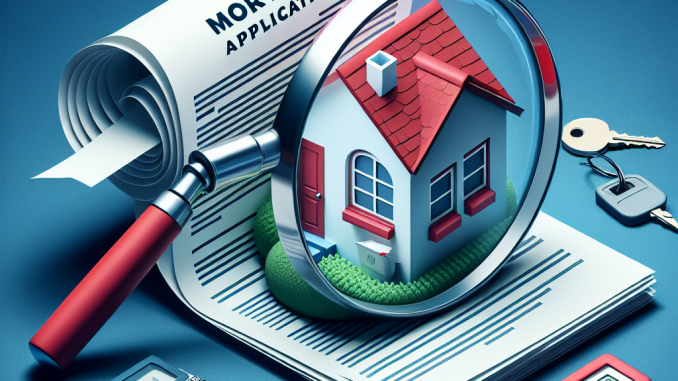
Unpacking the Essentials of a Mortgage Application
A mortgage application is essentially the paperwork you fill out when you’re looking to snag a loan for buying a house or refinancing an existing mortgage. Usually completed by you or the loan officer, this document dives deep into your financial landscape and the property involved. Here’s what this form typically digs into:
- Your employment track record
- Sources of your income
- Outstanding debts
- Details about the home itself
- The reason behind the loan
Most lenders lean on the Uniform Residential Loan Application (URLA) or its close cousins to gather this info — with the two leading versions being associated with Fannie Mae.
What’s Inside the Form 1003? The Nuts and Bolts
The infamous Form 1003 breaks down into several key sections, each unraveling a different part of your financial story and loan specifics.
Section 1: Borrower Details
This first slice of the application spells out your personal, employment, and income data, plus the same for any other folks co-signing the mortgage. It typically covers:
- Your name(s)
- Contact details
- Birthdate(s)
- Social Security number(s)
- Employer contact info
- Income streams, including base salary, overtime, bonuses, and commissions
- Additional income like child support, spousal support, disability, pensions, or Social Security benefits
Section 2: Financial Picture – Assets and Debts
This portion catalogs your financial holdings and what you owe — encompassing:
- Checking and savings accounts
- Certificates of deposit
- Investment and retirement portfolios
- Trust funds
- Credit card balances
- Installment debts, such as auto or student loans
Same applies here for any co-borrowers involved.
Section 3: Real Estate Holdings
Details about any other properties you or your fellow applicants own go here — their worth, your residency status, and any loans tied to them. If you’re chasing a refinance, this kicks off with the home at the center of that refinance.
Section 4: Loan and Property Specifics
Here you’ll spell out the mortgage amount requested and outline the property tied to the loan. Key points include:
- Loan amount sought
- Occupancy type—primary residence, vacation home, etc.
- Estimated value of the property
- Whether the loan is for purchase or refinancing
- Additional loans (like second mortgages) and their amounts
- Any financial gifts earmarked for the mortgage, like down payment contributions
Section 5: Declarations
This segment asks you to affirm or deny a series of personal and financial questions, including:
- Do you have family or business ties with the property seller?
- Are any judgments outstanding against you?
- Have you faced foreclosure in the past seven years?
Depending on your responses, you might be required to attach additional documentation with your application.
Section 6: Legal Acknowledgments and Agreements
This is your signature corner, making everything legally binding. You confirm the info you’ve given is truthful and give the lender permission to verify it. Plus, you agree the lender can report this mortgage info to credit bureaus.
Section 7: Military Service
If you’re serving or have served in the U.S. military—or if you have a spouse who did and is deceased—this section captures your status (active duty, veteran) and basic service details.
Section 8: Demographics
This optional part collects details about ethnicity, race, and gender for you and co-borrowers. It helps the government track fair lending practices and ensure compliance with housing laws.
Section 9: Loan Originator Details
Information about the mortgage lender and loan officer — licensing and signatures — are detailed here to keep everything above board.
Paper Trail: What You’ll Need to Apply
Once you reach out to a lender, they’ll peek into your credit and finances during initial screening, asking for documents like bank statements and W-2 forms.
These same documents usually jumpstart your full mortgage application after you sign a purchase contract. Common paperwork includes:
- Recent pay stubs (covering at least the past 30 days)
- Tax returns with W-2s from the previous two years
- Proof of miscellaneous income sources
- Bank account statements spanning the last 60 days
- Statements from investment and retirement accounts over the past 60 days
Before you jump into applying:
- Shop around. Get preapproval offers from at least three lenders to weigh your options.
- Keep your employment and financial status steady. Switching jobs or opening new credit lines during underwriting can jeopardize your approval.
- Avoid big-ticket buys or new credit inquiries while your mortgage is under review—it could derail the process or force a restart.
- Keep an eye on your debt levels. Lower debt usually paints you in a better light for loans.
- Consider locking in your interest rate, but first understand any rules or fees linked to the lender’s rate lock policy.
Quick Facts Snapshot
According to recent data from ICE Mortgage Technology (as of February 2025), it takes an average of 43 days to close a conventional home purchase loan or refinance. The range typically spans from about 30 to 60 days—dependent on lender, borrower, and property specifics.
Frequently Asked Questions
How long does the mortgage application process usually take?
From start to finish, expect the mortgage application journey to last anywhere between 30 and 60 days, with most closing around the 43-day mark.
What’s the next move after my mortgage gets the green light?
Once your loan clears approval, your lender will schedule the closing date. At least three business days before closing, you’ll receive a Closing Disclosure, outlining all final costs and closing fees to expect.
Can I snag a mortgage if my credit score isn’t stellar?
Absolutely. Conventional loans sometimes accept credit scores as low as 620, while FHA loans can go down to scores between 500 and 580, depending on your down payment size.